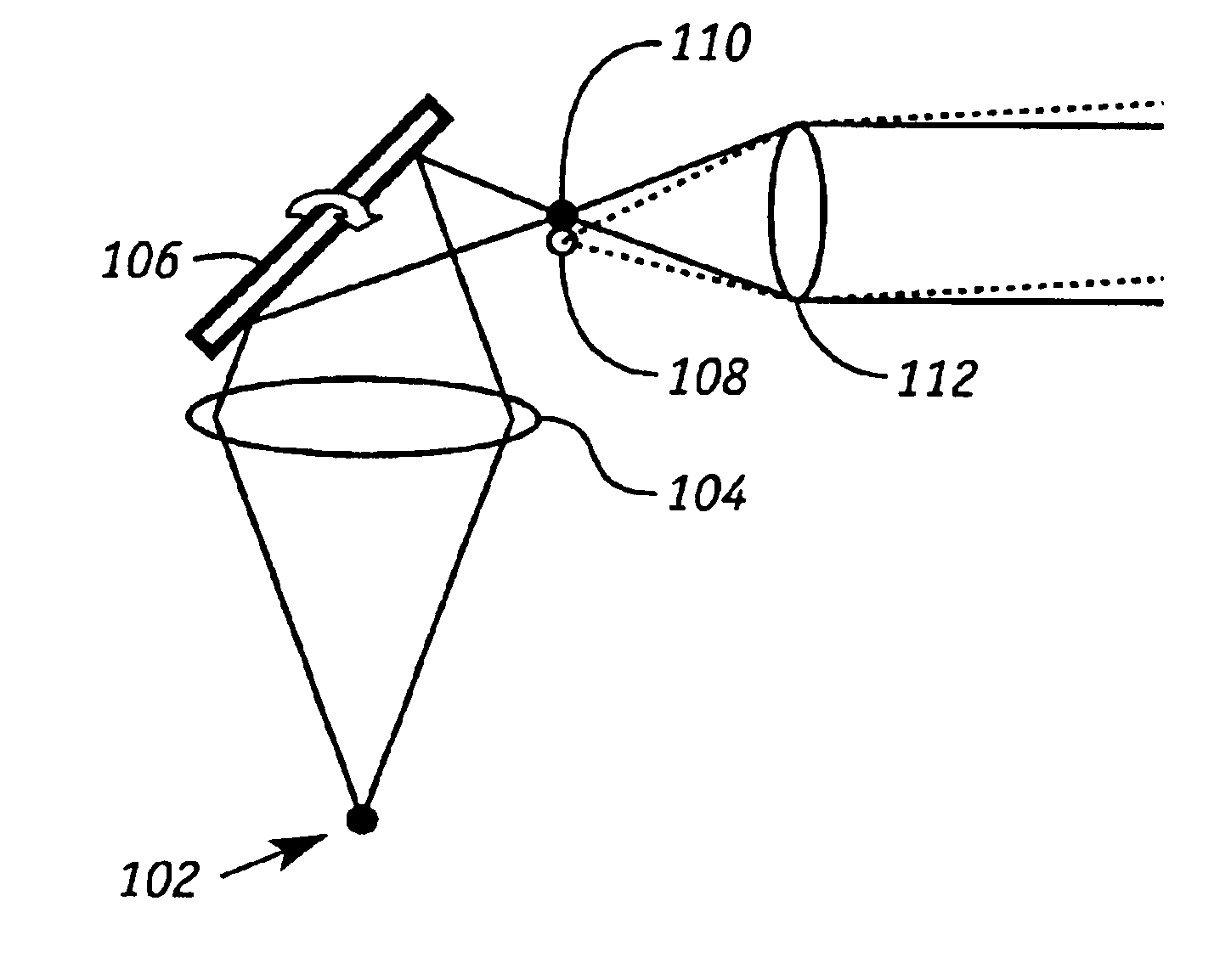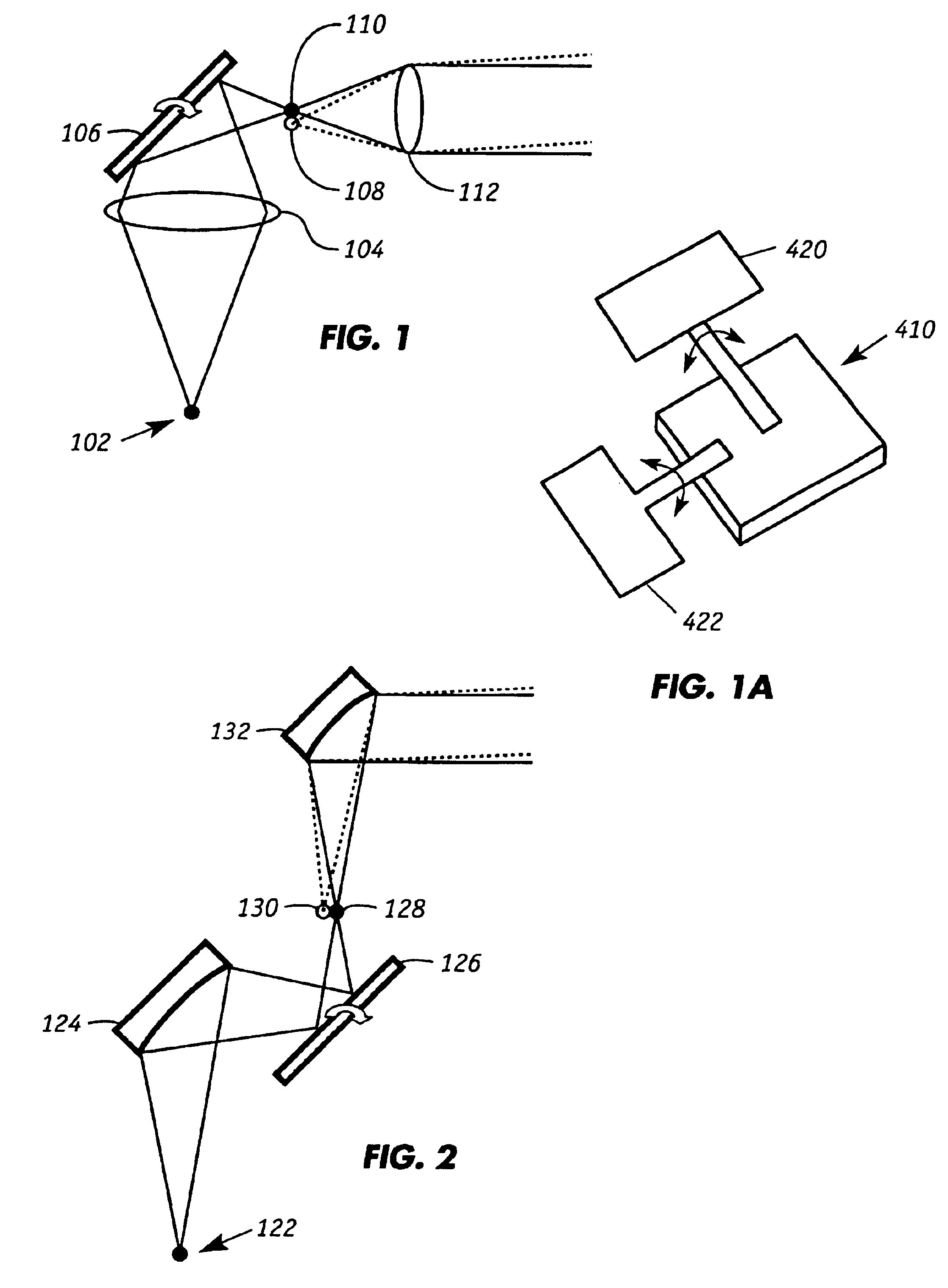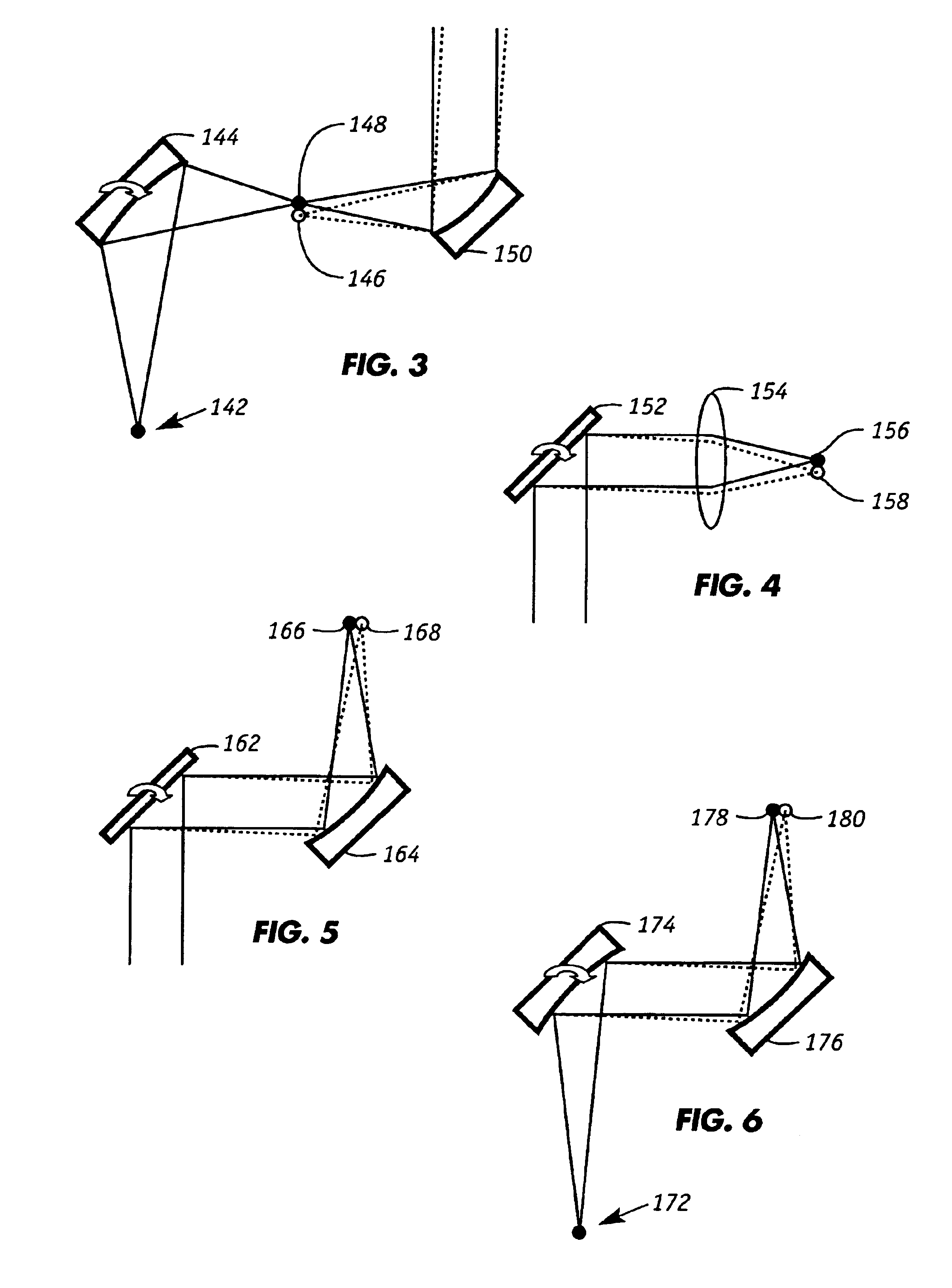Apparatus for generating partially coherent radiation
a technology of partially coherent radiation and apparatus, applied in the field of microelectronics, can solve the problems of slowing down the proliferation of these systems, affecting the operation of photomechanical apparatus, so as to increase the source size, and increase the source divergence
- Summary
- Abstract
- Description
- Claims
- Application Information
AI Technical Summary
Benefits of technology
Problems solved by technology
Method used
Image
Examples
Embodiment Construction
Scanning Coherence Controlling Köhler Illuminators for Microfield Lithography Applications
The Köhler illuminator is an important class of illumination systems that can be described as providing a Fourier-transform relationship between the source and the target illumination plane. A simple manifestation of such a system is a single lens where the source is placed in the front focal plane and the target illumination plane in the back focal plane. In this configuration, the lens can be seen as a collimating optic with respect to the source. Each individual source point, where a source point is defined as an elemental independent point radiator, can then be viewed as generating a plane wave exiting the lens at some unique angle. For a source point centered on the lens optical axis, the plane wave will travel along the optical axis and for any other source point, the exit angle will be determined by the angle defined by the source point offset from the optical axis and the distance to th...
PUM
| Property | Measurement | Unit |
|---|---|---|
| sizes | aaaaa | aaaaa |
| wavelength rate | aaaaa | aaaaa |
| pressure | aaaaa | aaaaa |
Abstract
Description
Claims
Application Information
 Login to View More
Login to View More - R&D
- Intellectual Property
- Life Sciences
- Materials
- Tech Scout
- Unparalleled Data Quality
- Higher Quality Content
- 60% Fewer Hallucinations
Browse by: Latest US Patents, China's latest patents, Technical Efficacy Thesaurus, Application Domain, Technology Topic, Popular Technical Reports.
© 2025 PatSnap. All rights reserved.Legal|Privacy policy|Modern Slavery Act Transparency Statement|Sitemap|About US| Contact US: help@patsnap.com



